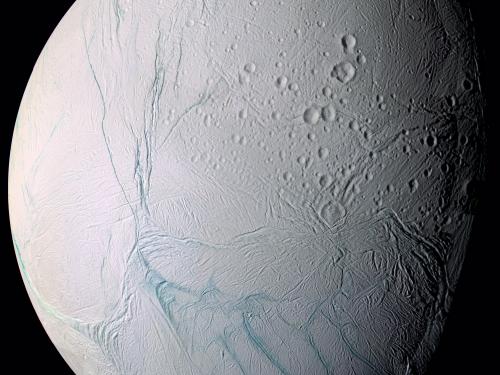
Stories of daring, stories of technological feats, stories of prevailing against the odds ... these are the stories we tell at the National Air and Space Museum. Dive in to the stories below to discover, learn, and be inspired.
Showing 11 - 18 of 18

June 19, 2023
Scientists are excited about Enceladus as a potential place for life and, more important, as a planet where we can look for life using existing technology and even predict, with some precision, the locations on the icy moon Saturn where we would most likely find this life.

July 15, 2022
Spacecraft face a dramatic range of conditions, from airless worlds bombarded by tiny meteorites to environmental extremes, when exploring our Universe.

July 14, 2022
There is no place like home—at least in our neighborhood.

May 09, 2019
Scientists believe our planet has a metallic inner core, but we can’t exactly crack it open and check. Instead, NASA is sending a mission to an asteroid named Psyche, which appears to be a nickel-iron planetary core a lot like the one at the center of the Earth.

August 23, 2018
The international community has contributed more to the exploration of space and our understanding of the universe than you might think. From India to Israel, lots of countries are sending missions to Mars, landing on comets, and observing Earth from orbit.

December 06, 2017
This past August, CEPS scientists traveled to Iceland to study geologic features known as pit chains, which form in a similar way to pit chains on Saturn’s icy moon, Enceladus.

August 12, 2016
The annual Perseid meteor shower is at its peak (August 11-13). Meteor showers occur when the Earth’s orbit around the Sun takes us through a debris field, which is often a trail of cosmic dust left behind by a comet.

January 07, 2013
On 6 April 2012, the following notice appeared in the Minor Planet Circular, under the category “Names of New Minor Planets”: (4262) DeVorkin = 1989 CO Discovered 1989 Feb. 5 by M. Arai and H. Mori at Yorii. David H. DeVorkin (b. 1944)